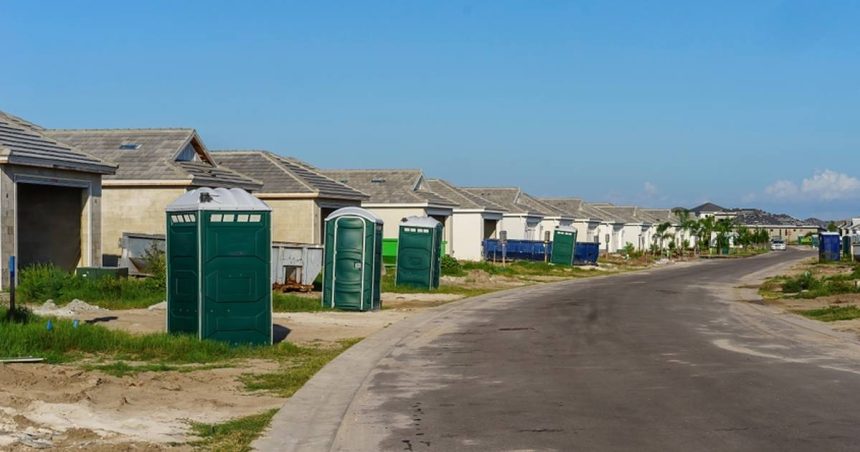Victoria’s construction productivity could be up sh*ts creek as worrying dunny data exposes a massive drop-off in active job sites.
The Herald Sun reported this week that the state’s largest portaloo hiring company, AIM Hire, have seen sales plunge by almost a third across the state as rising construction costs and labour shortages force sites to shut up shop.
The company, which operates 7790 portaloos across the state, shows that just 66 per cent of its drop dunnies are in use—more than 2,200 behind peak levels.
The numbers are in stark contrast to the start of 2023 before rate hikes and inflation had taken a firm grip on the industry when the provider had 96 per cent of its supply out in the field.
Clyde and Clyde North in Melbourne’s southeast take the top spot for portable toots with 367 in place between them, but the number is still a sharp drop from 440 only a year ago.
There have also been major falls in the city’s west, with the number in Tarneit, previously the city’s number two destination for mobile toilets, dropping from 240 to a measly 89 and Truganina down from 178 to 80.
AIM Site Hire managing director Elise Kelsey said the alarming figures could be a canary in the coal mine for the sorry state of the construction sector towards the back half of the year.
“We were almost at full capacity early last year, at 97 per cent utilisation,” she says.
“If you look at our top ten customers, they are all volume builders, who I think rely on the first-home buyer market, with interest rates being so high and lending conditions so tight – and building costs are so high compared to existing homes – I think this is why it has fallen away.
“The government want to build 1.2 million homes in Australia…I personally cannot see that happening unless there is some structural change to get the first-home buyers back into the market.”
Kelsey said she’s never seen builder demand plummet like this in the past, forcing the company to find a fresh block of land to house 1000 spare toots while the sector finds its feet.
But with the Reserve Bank considering a possible interest rate hike in August, it’s not looking good – especially for the tradies responsible for hitting the state’s ambitious 2.5 million home building target by 2051.
Confidence heads down the drain
The latest quarterly sentiment survey by Procore and Property Council revealed that industry confidence in Victoria’s home-building goals has plummeted to levels not seen since September 2020, during the Covid-19 pandemic.
The survey of more than 500 property insiders put Victoria’s Confidence Index falling to 90 — 10 points below neutral — compared to a national figure of 106.
The state’s forward work expectation over the next 12 months also dropped to 0.9 compared to 19 in NSW, 21 in Queensland, and 24 in South Australia.
The situation has gotten so bad that experts expect investors will turn to other states to take advantage of better tax incentives and building conditions, casting doubt over whether the government can deliver on its target to build 800,000 homes over the next decade.
The Property Council’s Victorian deputy executive director Andrew Lowcock said the results for Victoria were a serious cause for concern.
“The industry is anticipating very few new project commencements over the next year – with critical implications for new supply and affordability,” he said.
“The taxation and investment environment in Victoria is making it increasingly difficult for our members to obtain the financing to get projects out of the ground.
“At the exact time we need to be accelerating progress toward our ambitious housing targets, we’re going backwards instead.”
Looking forward, Mr Lowcock said property professionals were treating market conditions the same way they did during the middle of the state’s harsh lockdowns.
“This should be an urgent wake-up call for Victorian policymakers that a quicker and deeper response to the housing crisis is required, which needs to start with taxation incentives and relief that stimulates both supply and demand,” he added.







